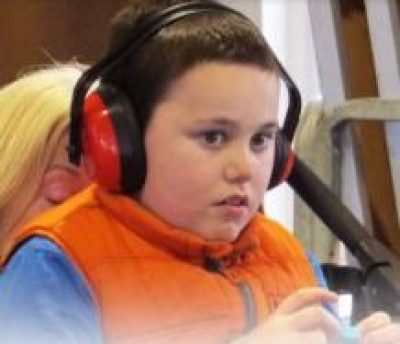A Welcoming Place – autistic young people in church

Through the Roof’s latest publication is designed to help you create an environment in your youth and children’s work which effectively includes everyone, including those with autistic spectrum conditions. The publication endeavours to give a snapshot of the world through the eyes of the autistic child, and thus helps to understand their behaviours and what we can do to minimise their distress and capitalise on their gifts and strengths. It includes practical strategies and proven approaches, as well as a section on a Biblical theology of disability to help your young people appreciate God’s heart for people with additional needs, and their place within the Body of Christ. Finally, there is a comprehensive index, enabling the resource to be used as a handy reference book as and when situations arise. Follow this link to buy your copy for £5 from our website shop
Extract from A Welcoming Place – autistic young people in church
Life seen through the autistic spectrum
For many autistic people, life is like a game in which you don’t know the rules.
Other people know the rules, but every time you think you have them worked out, they change.
These changes seem random and patternless, so they can never be predicted.
For example:
Hitting a drum makes an interesting booming noise.
Hitting a tambourine makes an interesting tinkling noise.
If you hit someone hard enough they usually make an interesting crying noise.
The first two of these are allowed.
Someone usually stops you if you try to do the third one!
Why should this be?
All three involve hitting something.
All three make a nice noise.
So why should the “rules of the game” change in the third instance?
You and I know the answer to that
We put ourselves in other people’s shoes.
We know that it hurts when someone thumps us, and so we don’t do it to other people.
Not all autistic children can think like this
Some lack the ability to do this, not because they don’t care but because they don’t yet understand.
So to them, this change to the “rule” about hitting things is completely arbitrary.
This gives rise to anxiety – if I can bang a drum or a tambourine but not a person, how am I to know what other things I’m allowed or not allowed to bang?
How about…
- A teapot?
- A cat?
- A banana?
They may have no way of working out the answers to these questions – all they can hope to do is learn and memorise which ones are allowed and which are not.
Sometimes the rules change
2 children are messing about in Sunday School, play-fighting.
One gives the other a playful slap. They fall about laughing, and, crucially, THE SUNDAY SCHOOL TEACHER DOESN’T STOP THEM!
So now the rules have changed.
Sometimes it is ok to hit someone else.
How am I to know when it’s ok and when it’s not ok?
It would be completely beyond the ability of many autistic children to work out the answer to this question, even though it seems obvious to us.

